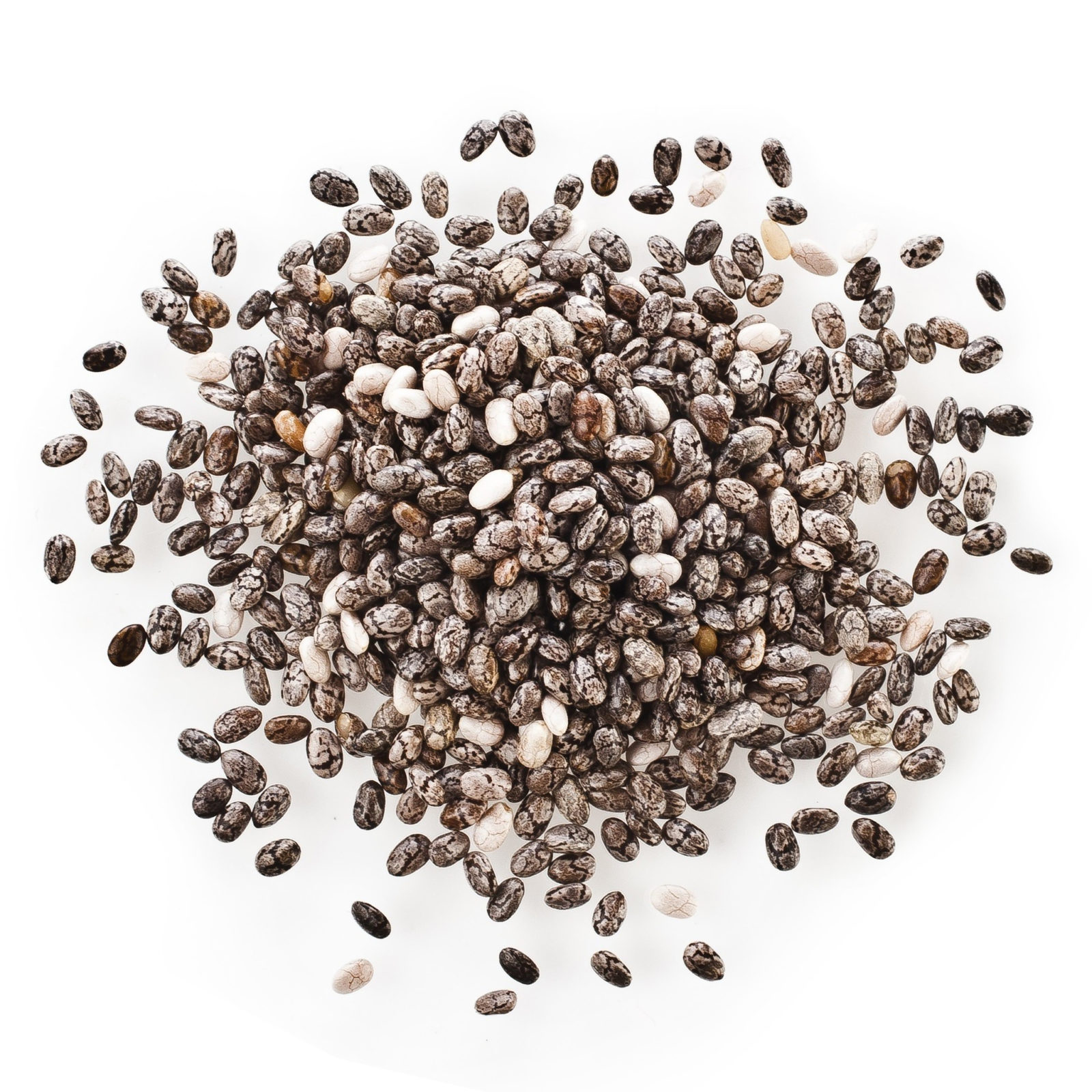Chia seeds are known as “super seeds” because they deliver a lot of nutrition in a small number of calories. They are extremely rich in dietary fiber, omega fatty acids (both omega 3 and omega 6), calcium, antioxidants, and protein as well as iron and potassium. This makes them an incredible functional food, for these tiny seeds aid in increasing satiety index, preventing cardiovascular disease, reducing inflammation, protecting the nervous system and balancing blood sugar (Munoz, L.A., et al., 2013).
This ancient oilseed has been used historically by both the Mayan and the Aztec civilizations as a source of food and has been part of the human diet in South America for 5500 years. It is a biannually cultivated plant which originated in Mexico and Northern Guatemala, it is part of the mint family – Labiatae, a subdivision of Spermatophyta, scientifically named Salvia hispanica (Ali, N.M., et al., 2012) (Ullah, R., et al., 2015). Its name is derived from the Spanish word ‘chain’ which means oily, referring to the oily chia seed. Used traditionally as folk medicine, food, cosmetics, for religious purposes and art in both the Aztec and Mayan civilizations, it was such an important part of their daily lives that it was the second most-produced crop after beans (Peiretti. P.G., 2009).
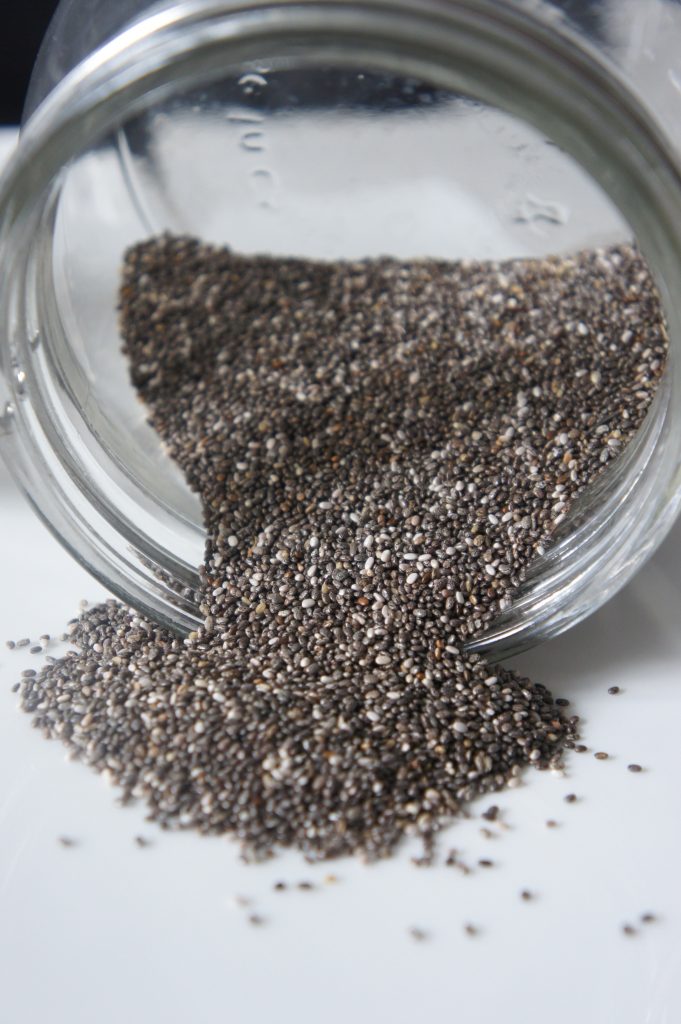
Chia Seed Health Benefits
Chia seeds are a powerhouse of nutrients and those instill great benefits on to our bodies and health. They are an amazing functional food. Providing nutrition, healing, and energy. The top nine benefits of this chia seeds include;
- Aids in Reducing Inflammation
- Promotes Proper Digestion
- Balances Blood Sugar Levels
- Reduces Bloating and Abdominal Distension
- Aids in Weight-loss
- Balances Cholesterol levels
- Supports Healthy Bones
- Lowers Cardiovascular Disease Risks
- Enhances Detoxification
Aid in Reducing Inflammation
It is the fatty acid content in chia seeds that aids in reducing inflammation and regulating inflammatory responses in the body and well as boosting up the body’s immune system (Santos-López, J.A., 2017).
Topically chia seed oils application has been shown to improve skin hydration, preventing itching and reducing inflammation (Jeong, S.K., et al., 2010).
Promote Digestive Well-being
Healthy bacterial flora is so beneficial for digestion, nutrient assimilation, and wellbeing. Chia seeds aid in the survival and incorporation of probiotic supplements into the digestive environment and well as providing essential prebiotic nutrition for the healthy probiotics to flourish in the digestive environment (Bustamante, M., et al., 2017).
Chia Reduces Bloating and Distension
A lot of times abdominal distension and bloating will be confused with excess fat. Though there may be a bit of fat built up, it is often a result of backed-up bowels and off-gassing of fermenting food and waste. If you eat three meals a day and don’t experience even one bowel movement a day it can lead to a great deal of bloating, gas and abdominal pain. Including chia seeds into your diet, which contain both soluble and insoluble fiber will aid in moving out waste and reducing bloating and distension.
Aid in Balancing Blood Sugar Levels which is Beneficial for Diabetics
Daily consumption of 37g of chia seeds aids in stabilizing blood sugar levels for diabetic patients. Inflammatory markers were decreased in type 2 diabetes patients who consumed chia daily, as was postprandial glycemia which played a part in improving blood pressure and coagulation (Vuksan, V., et al., 2010).
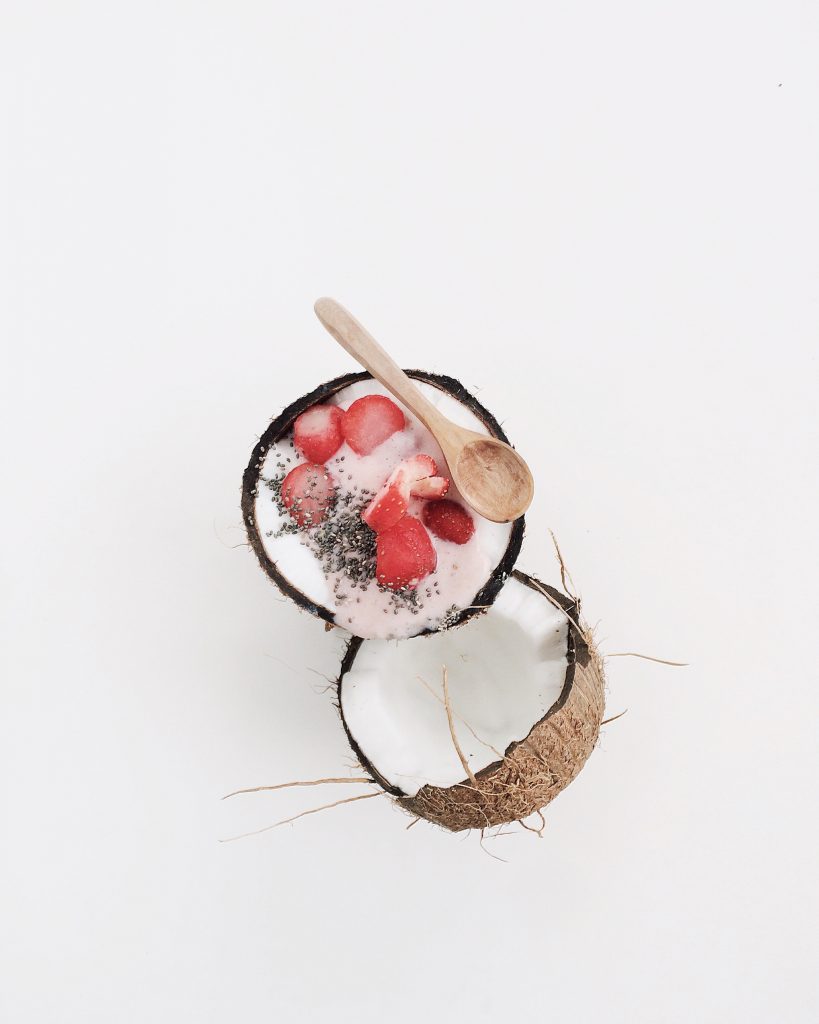
May aid in Weight-loss
Chia seed consumption will no shed pounds of fat off your body on its own, but it can help you in your weight loss journey. Chia seed consumption has been shown to regulate blood sugar levels and maintain satiety, which can be beneficial in curbing craving and preventing over-snacking and binging.
Helping to regulate bowel movements, adding this source of fiber into your diet will eliminate waste which will with time reduce gut bloating and distention which can simply shed a pound or two.
A 2017 published study in Nutrition, Metabolism and Cardiovascular Disease looked at overweight and obese patients with type 2 diabetes and the benefits of this oilseed. The study found that obese patients supplementing daily with chia for six months lost more weight over the control group. It is important to note that the groups were both on a controlled limited caloric diet, the control group consumed oat-bran instead of chia (Vuksan, V., et al., 2017).
Chia Aids in Lowering Cholesterol Levels
Daily consumption of chia seeds has been shown to reduce cholesterol, and leading to a decline in serum triglycerides as well as enhancing the benefits of HDL cholesterol or ‘good’ cholesterol in the body. Other studies, with similar results, found that chia decreased LDL cholesterol with no negative side effects (Fernandez, I., et al., 2008) (Ayerza, R.J., 2007) (Vertommen, J., et al., 2005).
Fiber-rich diets are very beneficial for individuals who have high cholesterol levels. Though cholesterol is found in foods (such as eggs, meats, and cheese), it is mainly made by the body. The body produces cholesterol as a building block for all our hormones, without it we could not function. Cholesterol also makes a mucosal layer in the digestive tract to make it easier for waste removal and to get rid of cholesterol from the body as the body will continue to make cholesterol regardless of how much is already in the body. If one is not having at least one bowel movement daily (and not a tiny one, a pretty sizable in one piece) cholesterol coating the GI tract gets reabsorbed back into the body because it is not being properly eliminated daily. A diet high in fiber and water aids in regulating bowel movements and aiding in the elimination of cholesterol to naturally balance the levels within the body (Cohen, D.E., 2008).
Maintains Bone Integrity
The combination of calcium and magnesium in chia seeds makes nourishing and strengthening bones very easy (along with a healthy diet and lifestyle). Magnesium is integral for calcium uptake in the intestine and to maintain proper levels within bones. Low levels of magnesium have been shown to result in calcium leakage from bones. Chia seeds have been shown to increase bone mineral content in rats. As one ages bone mineral density decreases, chia seeds were shown to prevent this from occurring. Other positive benefits were increased bone strength as well as improved liver and intestinal function (Chani, E.M.M., et al., 2018).
Helps to Lower the Risk of Heart Disease
A 2014 study published in Plant Foods for Human Nutrition, found that Chia flour (made of milled chia) was able to reduce ambulatory and high blood pressure and was beneficial in the treatment of hypertension. Subjects in the study received 35g/day had lowered blood pressure over the placebo group as well as less lipid peroxidation (oxidative damage to cells) and lower plasma nitrite levels (Toscano, L.T., et al., 2014).
A 2007 study out of St. Michael’s Hospital in Toronto, Canada looked at chia seed supplementation to prevent cardiovascular risk factors in patients with type 2 diabetes. it found that chia seeds taken daily, longterm has a very promising impact on cardiovascular prevention aiding to minimize dependence on conventional therapy. It was also shown beneficial in preventing myocardial infarction and strokes by preventing platelet clumping (Ullah, R., et al., 2015)(Vuksan, V., et al., 2007) (Vuksan, V., et al., 2010).
The study along with another published in 2010 a diet inclusive of chia seeds aided in improving blood pressure (by lowering by up to 6 mmHg), coagulation and greatly reduced inflammatory markers in the body. The 2010 study, which worked off of the 2007 study had both men and women consume Salvia hispanica daily for a 12 week period, found that patients had a more regulated appetite, and improved kidney and liver function (Vuksan, V., et al., 2007) (Vuksan, V., et al., 2010).
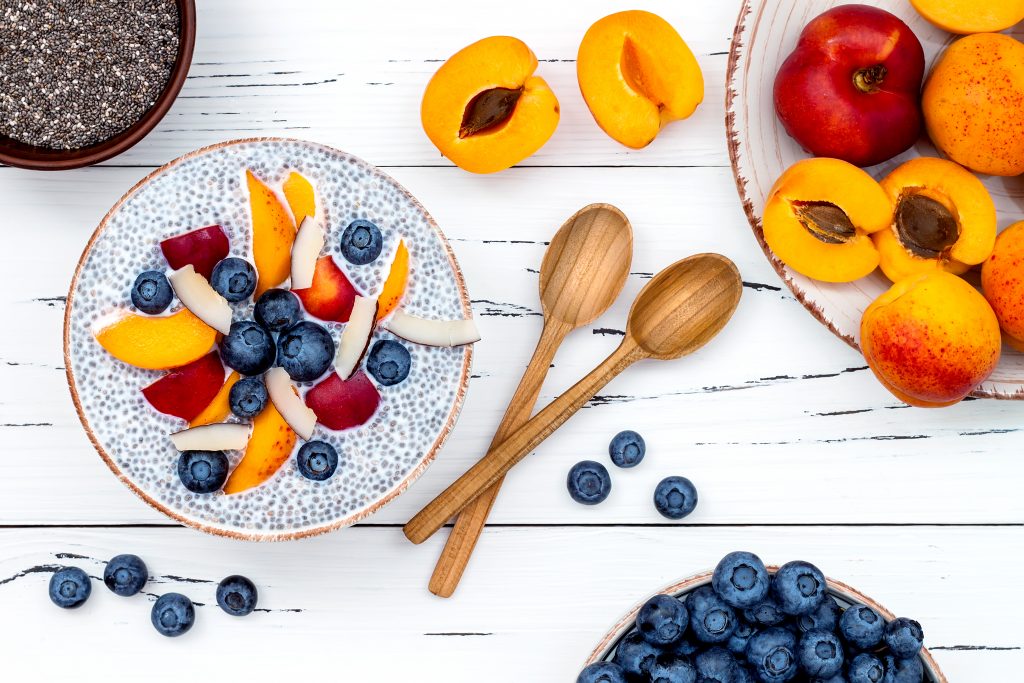
Naturally Boost the Body’s Ability to Detox
Fiber is important for microbial development and growth as well as promoting gut health. Chia seeds are a great way to get both soluble and insoluble fiber into one’s diet. As most individuals in the United States and other developed nations do not consume enough fiber, adding in chia seeds is a great way to start, however, consumption of fresh vegetables and fruit is also important.
By building up good bacterial colonies in the gut one’s immune system is given a friendly boost. Fiber-rich food, such as chia seeds, also provides the intestinal barrier with extra support, enhancing it’s protective functions and reducing the burden other organs such as kidneys and the liver, would have to undertake if foreign bacteria and pathogens, etc. entered the body. By allowing the kidneys and liver to focus on their main roles, such as metabolic action and detoxification, the body will function better as a whole and natural detoxification pathways will work more smoothly, especially if waste is being excreted optimally (Kieffer, D.A., et al., 2016).
Nutritional Profile
Salvia hispanica is not only delicious but nutritionally speaking are also very healthy. In fact, it is hard to list all of the health benefits of seeds. If you want to protect your overall health, try adding them to your diet. They contain plenty of vitamins, minerals, antioxidants, and phytonutrients. Chia seeds are a good source of calcium and protein for tissues. These seeds are an excellent source of boron, that helps the body to assimilate and also use calcium. These nutrients support the proper functioning of the brain.
| Nutrients | Per 1 Ounce (2 tbsp) |
| Calories | 138 calories |
| Protein | 4.7 grams |
| Fat | 8.7 grams |
| Omega 3 | 5.1 grams |
| Omega 6 | 1.6 grams |
| Omega 9 | 0.6 grams |
| Carbohydrates | 11.9 grams |
| Fiber | 9.8 grams |
| Calcium | 179 mg |
| Iron | 2.2 mg |
| Magnesium | 95 mg |
| Phosphorus | 244 mg |
| Potassium | 115 mg |
| Zinc | 1.3 mg |
| Copper | 0.3 mg |
| Vitamin C | 0.5 mg |
| Thiamin | 0.2 mg |
| Riboflavin | 0.05 mg |
| Niacin | 2.5 mg |
| Folate | 14 mcg |
| Beta Carotene | 15 IU |
| Vitamin E | 0.1 mg |
Antioxidant and Phytochemical Rich
These tiny seeds are filled with powerful antioxidants, which not only provide protection and benefits for the body, they also help in preventing the high oil content in the seeds from going rancid.
Rutin and hesperidin are the major flavonoids found within chia (Ding, Y., et al., 2018). The combination of phytochemicals in chia aid in combating free radical damage, oxidative stress – which, when left unattended can lead to diabetes, arteriosclerosis, inflammation, different forms of cancer and thrombosis. Chia has a higher antioxidant activity than moringa and sesame. It is also very rich in quercetin, caffeic acid, chlorogenic acid and have been shown to have a possible effect anti-carcinogenic, antihypertensive, and neuroprotective effect on the body (Fernandez, I., et al., 2007).
Chia also contains iodine in a natural form – beneficial for thyroid health, the prevention of goiters and boosting up the immune system. North America contains iodine-poor soil (that is why it is known as the goiter belt), conventional agriculture, although fertilized contains none and organic agriculture may have some but it is dependent on location and variety of fermented and manure used (Ullah, R., et al., 2015).
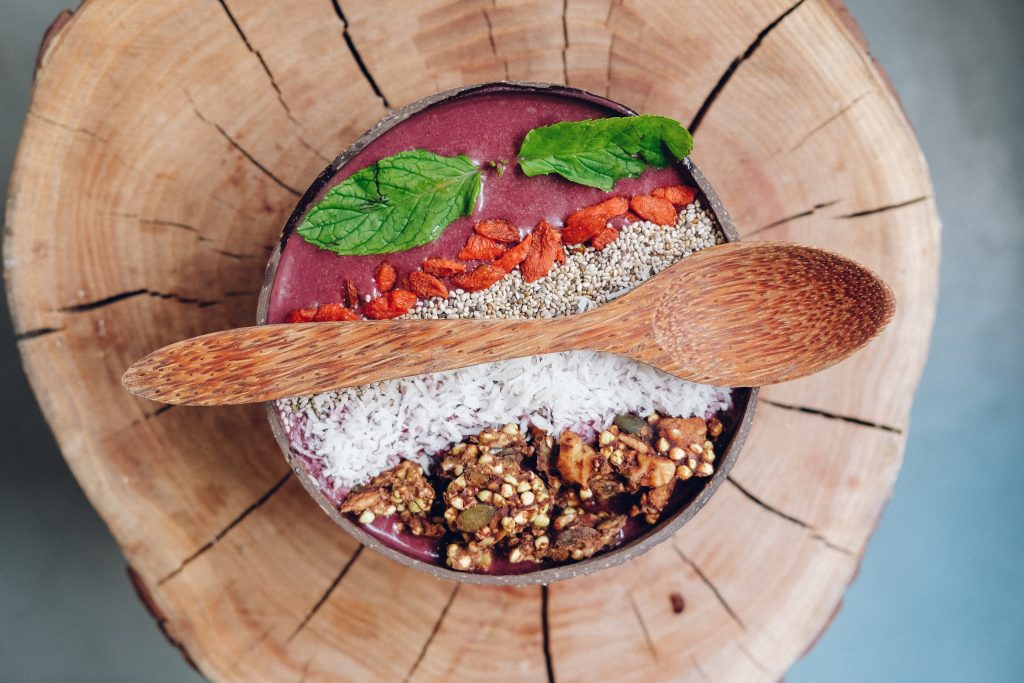
An Excellent Source of Essential Fatty Acids
Healthy fats are essential for so many bodily functions, chia contains approximately 25-40% oil, 60% of which is Omega 3 or Alpha Linoleic Acid (ALA – which is cardio-protective for women) and 20% is Omega 6 (Ali, N.M., et al., 2014). The fatty acid content in chia seeds has been found to increase plasma levels of ALA and EPA in postmenopausal women significantly within seven weeks with daily ingestion of 25g of milled seeds (Jin, F., et al., 2012).
The high tocopherol content in chia aids in making the seed shelf-stable and preventing its oils from going rancid (Imran, M., eta l., 2016).
Contain both Insoluble and Soluble Fibre
Fiber does wonders for the body. It aids in the prevention of diverticulosis, as well as colorectal cancer and constipation and diarrhea. It balanced blood sugar levels and maintains a feeling of satiety. The presence of fiber in chia aids in diabetes mellitus. By slowing down the assimilation and absorption of glucose, it prevents blood sugar spikes. Fibre benefits the intestines by enhancing peristalsis and the migratory motor complex of the gastrointestinal tract.
A greater elimination of waste, which is also brought about by the presence of fiber also increases the reduction of plasma cholesterol (Ixaina, V.Y., 2008) (Ullah, R., et al., 2015).
A diet containing soluble and insoluble fiber has been shown to decrease the risk of coronary heart disease, lowering type 2 diabetes risk, colorectal cancer as well as balancing cholesterol levels (Reyes-Caudillo, E., et al., 2008).
A Plant-Based Source of Protein
Chia seeds contain between 15-25% protein by weight and a wonderful array of amino acids, mainly methionine and cysteine (Sandoval-Oliveros, M.R., et al., 2013). The reason the protein content in chia seeds ranges is due to farming practices, soil quality and climate conditions (Armstrong, D., 2004).
Chia seeds are rich in amino acids, containing slightly less than can be found in soybeans. For those who are concerned about xenoestrogens, chia is a wonderful plant-based protein alternative (Reyes-Caudillo, E., et al., 2008).
How to Use and Eat Chia Seeds
Chia seeds have a very subtle flavor so you can add them to just about anything. Enjoy them sprinkled on a salad or in your favorite yogurt. Try them in a smoothie, sprinkled on steamed veggies or in a soup. The sky is the limit with these little powerhouse seeds. Including seeds in your diet might be one of your best decisions. Just remember that as healthy as they are, seeds are a very concentrated source of fat, though healthy fats and calories so enjoy them in smaller portions.
Seed can soak 10-15 times the weight of the seed. This property helps the body to stay hydrated for longer and also retains electrolytes in the body.
Chia seeds can replace unhealthy fat with just a single recipe. These can be used raw in spreads, salad dressings, ice cream and, fruit shakes. It can also be added to cakes, cookies, muffins, and other baked foods (Ixtaina, X.Y., 2008).
Side Effects of Chia Seeds
Salvia hispanica is considered a safe food and has an insignificant heavy metal content (Armstrong, D., 2004).
The only caution to take is to make sure that you consume enough water. As with all forms of fiber when too much is consumed with a lack of water it can result in constipation and very hard stools. If you find it hard to consume large quantities of water, soaking your chia seeds prior to consumption is a good idea, though still make sure to include water in your diet, adding fresh lemon or mint leaves can make it more refreshing.
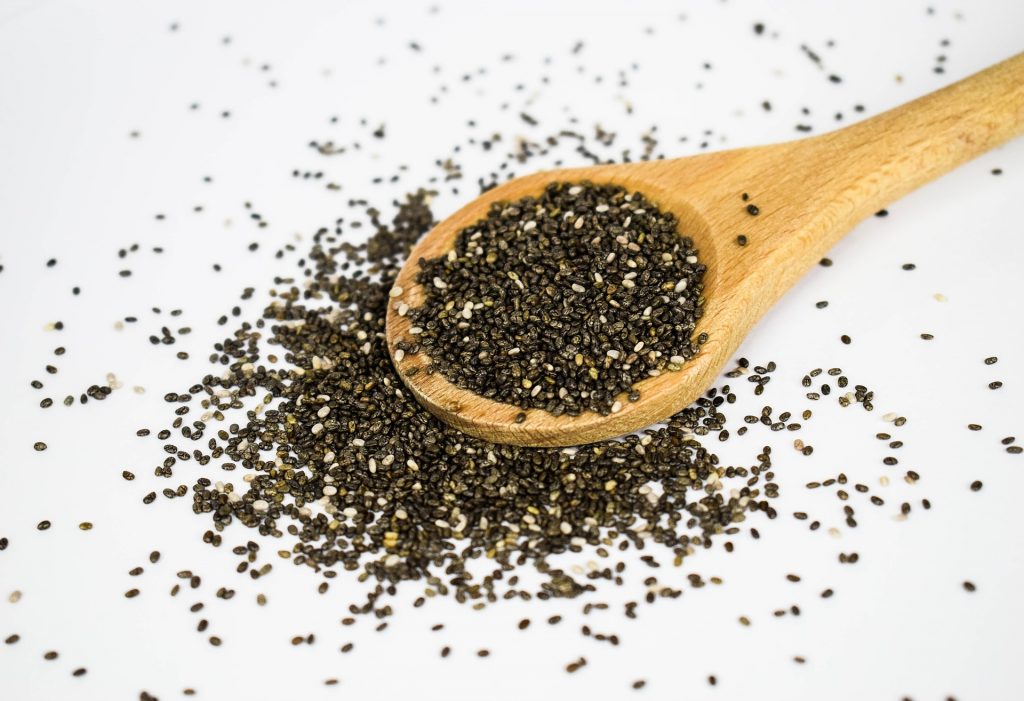
References
Ali, N.M., Yeap, S.K., Ho, W. Y., Beh, B.K., Tan, S.W., Tan, S.G. (2012). The Promising Future of Chia Salvia hispanica l. Journal of Biomedicine and Biotechnology. Volume 2012.
Armstrong D (2004). Application for approval of whole chia (Salvia hispanica L.) seed and ground whole seed as novel food ingredient. Northern Ireland, R.
Ayerza RJ, Coates W. Seed yield oil content and fatty acid composition of three botanical sources of omega 3 fatty acid planted in the Yugas ecosystem of tropical Argentina. Trop Sci. 2007;47(4):183–187
Bustamate, M., Oomah, B.D., Rubilar, M., Shene, C. (2017). Effective Lactobacillus Plantarum and Bifidobacterium infantis encapsulation with chia seed (salvia hispanica L.) and flax seeds (Linum ustatissimum, L.) mucilage and soluble protein by spray drying. Food Chemistry. Volume 216, pages 97-105.
Chani, E.M.M., Packeco, S.O.S., Martinez, G.A., Freitas, M.R., Ivona, J.G., Craig, W.J., Packeco, F.J. (2018). Long-Term Dietary intake of chia seed is associated with Increased Bone Mineral Content and Improved Hepatic and Intestinal Morphology in Sprague – Dawley Rats. Nutrients. Volume 10, Issue 7, pages 922.
Cohen D. E. (2008). Balancing cholesterol synthesis and absorption in the gastrointestinal tract. Journal of clinical lipidology, 2(2), S1-3.
Ding, Y., Lin, H-W., Lin, Y-L., Yang, D-J., Yu, Y-S., Chen, J-W., Wang, S. Y., Chen Y-C. (2018). Nutritional Composition in the Chia seed and its processing properties on restructured ham-like products. Journal of Food and Drug Analysis. Volume 26, Issue 1, pages 124-134.
Fernandez I,. Vidueiros SM, Ayerza R, Coates W, Pallaro A (2008) Impact of chia (Salvia hispanica L.) on the immune system: a preliminary study. Proceedings of the Nutrition Society, 67 (OCE), E12.
Imran, M., Nadeem, M., Manzoor, M. F., Javed, A., Ali, Z., Akhtar, M. N., Ali, M., … Hussain, Y. (2016). Fatty acids characterization, oxidative perspectives and consumer acceptability of oil extracted from pre-treated chia (Salvia hispanica L.) seeds. Lipids in health and disease, 15(1), 162.
Ixtaina VY, Nolasco SM, Tomas MC. Physical properties of chia (Salvia hispanica L.) seeds. Ind Crop Prod. 2008;28(3):286–293.
Jeong SK, Park HJ, Park BD, Hwan Kim H. Effectiveness of Topical Chia Seed Oil on Pruritus of End-stage Renal Disease (ESRD) Patients and Healthy Volunteers. Ann Dermatol. 2010;22(2):2010.
Jin, F., Nieman, D.C., Sha, W., Xie, G., Qiu, X., Fia, W. (2012). Supplementation of Milled Chia Seeds Increases Plasma ALA and EPA in Postmenopausal Women. Plant Food for Human Nutrition. Volume 67, Issue 2, pages 105-110.
Kieffer, D.A., Martin, R.J., Adams H.S. Impact of Dietary Fibers on Nutrient Management and Detoxification Organs: Gut, Liver, and Kidneys, Advances in Nutrition, Volume 7, Issue 6, 1 November 2016, Pages 1111–1121
Leaf A, Kang JX. Omega-3 fatty acids and cardiovascular disease. The re – turn of T-3 fatty acids into the food supply. I- Land-based animal food products and their health effects. edited by Simopoulos AP. Basel AG: Karger S; 1998. pp. 24–37.
Munoz, L.A., Cobos, A., Diaz, O., Augulera, J.M. (2013). Chia Seed (Salvia hispanica): An Ancient Grain and a new Functional Food. Food Review International. Volume 29, Issue 4, pages 394-408.
Peiretti PG, Gai F. Fatty acid and nutritive quality of chia (Salvia hispanica L.) seeds and plant during growth. Anim Feed Sci Technol. 2009;148(2–4):267–275.
Reyes-Caudillo E, Tecante A, Valdivia-Lopez MA. Dietary fibre content and antioxidant activity of phenolic compounds present in Mexican chia (Salvia hispanica L.) seeds. Food Chem. 2008;107(2):656–663.
Sandoval-Oliveror, M.A., Paredes-Lopez, O. (2013). Isolation and Characterization of Proteins from Chia Seeds (Salvia hispania L.) Journal of Agriculture and Food Chemistry. Volume 61, Issue 1, pages 193-201.
Santos-Lopez, J.A., Garcimartin, A., Lopez-Olivia, M.E., Bautista-Avila, M., Gonzalez-Munoz, M.J. (2017). Chia Oil- Enriched Restructured Pork Effects on Oxidative and Inflammatory Status of Aged Rats Fed High Cholesterol/High Fat Diets. Journal of Medicinal Food. Volume 20, Number 5, Issue 1.
Toscano, L.T., de Silva, C.S.O, Toscano, L.T., de Almeida, A.E.M., Santos, A.C., Silva, A.S. (2014). Chia Flour Supplementation Reduces Blood Pressure in Hypertensive Subjects. Plant Foods for Human Nutrition. Volume 69, Issue 4, page 392-398.
Ullah, R., Nadeem, M., Khalique, A., Imran, M., Mehmood, S., Javid, A., & Hussain, J. (2015). Nutritional and therapeutic perspectives of Chia (Salvia hispanica L.): a review. Journal of food science and technology, 53(4), 1750-8.
- Vertommen J, Van de Sompel AM, Loenders M, Van der Velpen C, De Leeuw I. (2005) Efficacy and Safety of 1 Month Supplementation of SALBA (Salvia Hispanica Alba) Grain to Diet of Normal Adults on Body Parameters, Blood Pressure, Serum Lipids, Minerals Status, and Haematological Parameters. Results of a Pilot Study. The 23rd International Symposium on Diabetes and Nutrition of the European Association for the Study of Diabetes.
Vuksan V, Whitman D, Sievenpiper J, Jenkins A, Rogovik A, Bazinet R, Vidgen E, Hanna A. Supplementation of conventional therapy with the novel grain Salba (Salvia hispanica L.) improves major and emerging cardiovascular risk factors in type 2 diabetes. Diabetes Care. 2007;30:2804–2810.
Vuksan V, Jenkins AL, Dias AG, Lee AS, Jovanovski E, Rogovik AL, Hanna A. Reduction in postprandial glucose excursion and prolongation of satiety: possible explanation of the long-term effects of whole grain Salba (Salvia Hispanica L.) Eur J Clin Nutr. 2010;64(4):436–438.
Vuksan, V., Jenkins, A.L., Brissette, C., Choleva, L., Jovanovski, E., Gibbs, A.L>, Bazinet, R.P., Au-Yeung, F., Zurbau, A., Ho, H.V.T., Duvnijak, L., Sievenpiper, J.L., Josse, R.G., Hanna, A. (2017). Salba-chia (Salvia hispanica L.) in the treatment of overweight and obese patients with type 2 diabetes: A double-blind randomized controlled trial. Nutrition, Metabolism and Cardiovascular Diseases. Volume 27, Issue 2, pages 138-146.
Amanda Filipowicz is a certified nutritional practitioner (CNP) with a bachelor in environmental studies (BES) from York University. She also has certification in clinical detoxification, prenatal and postnatal care as well as nutrition for mental health. She has been working as a nutritionist since 2013 and is a lifelong proponent of eating healthy.

